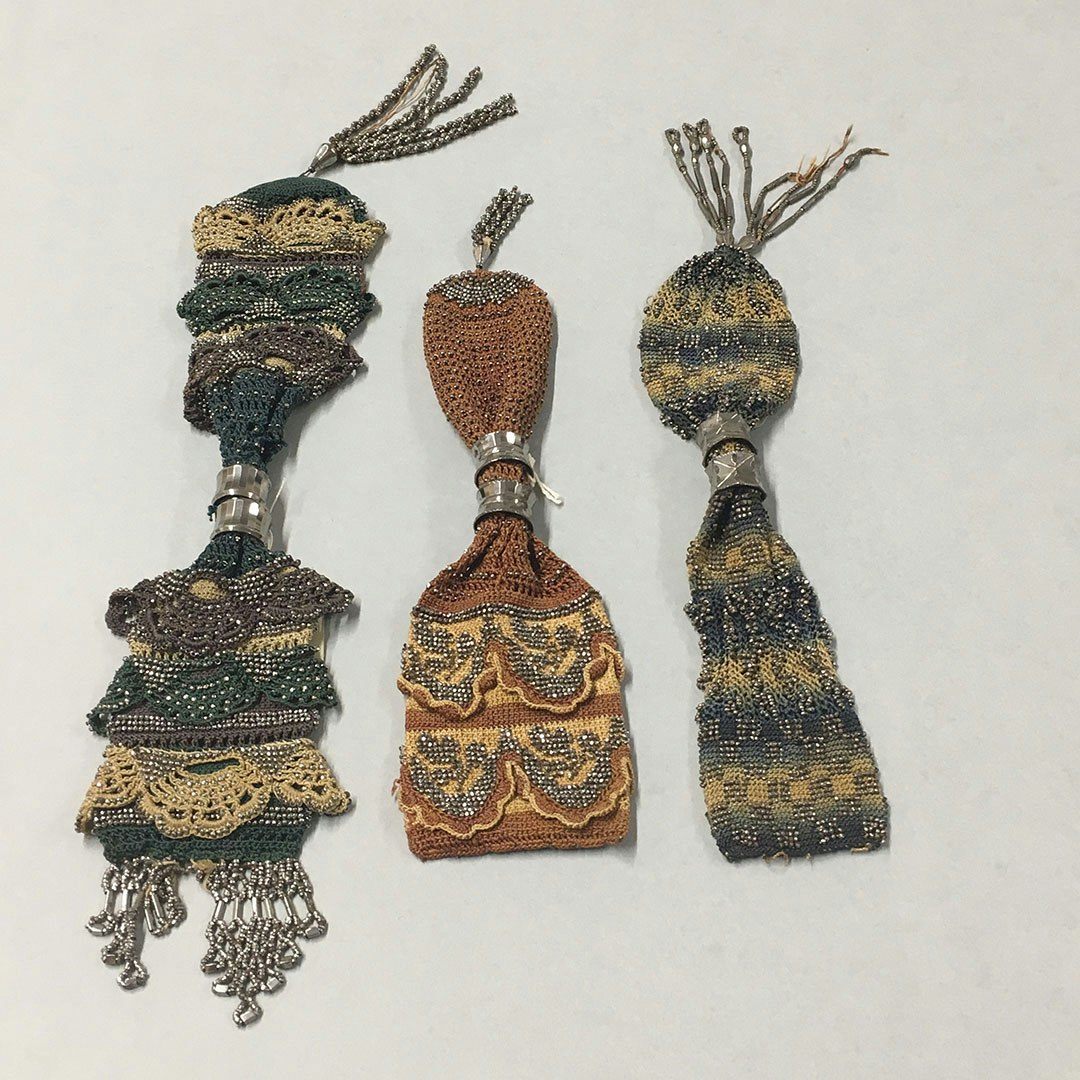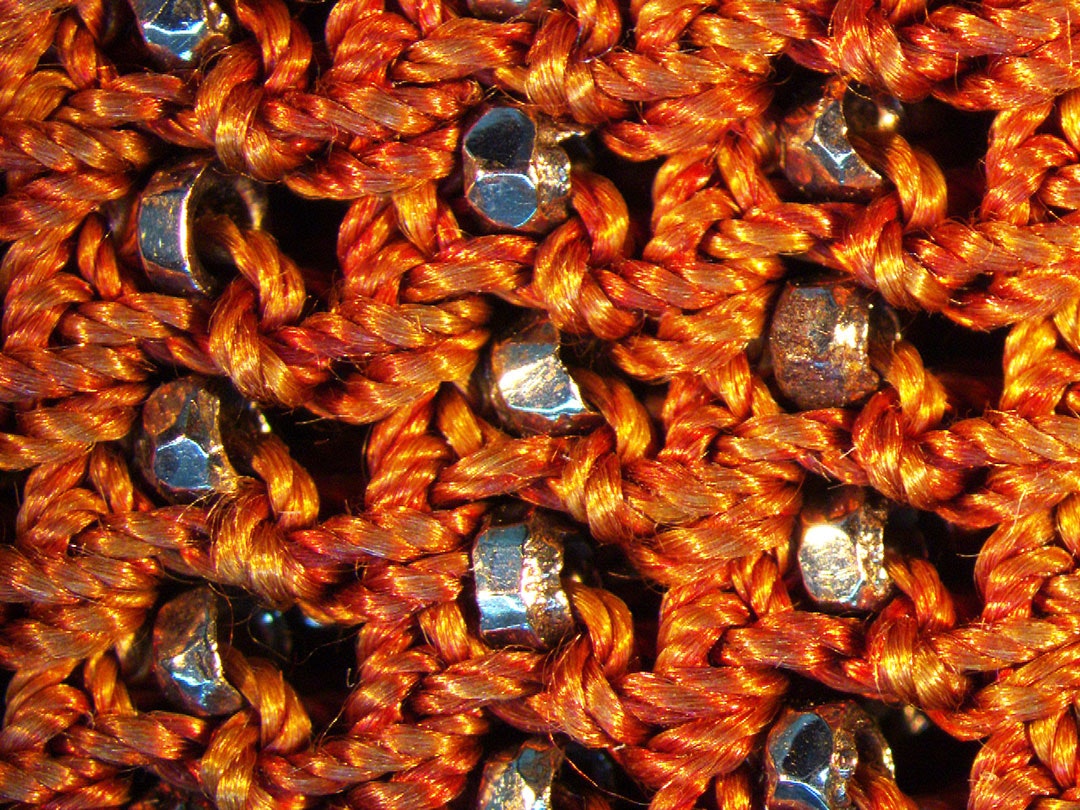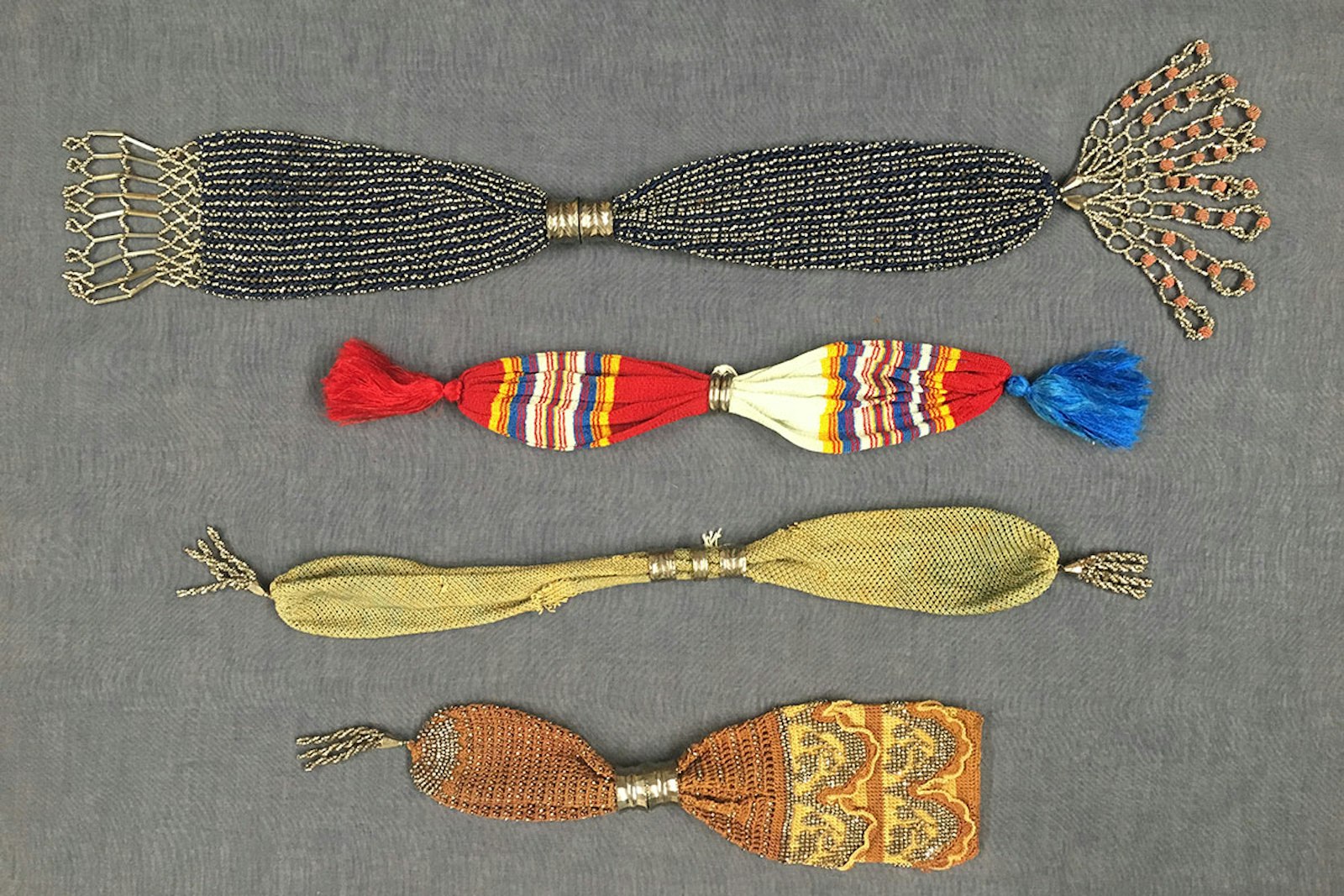To be called a miser is an insult. A miser is a “mean, grasping person” according to the Merriam-Webster Dictionary. The Oxford Dictionary describes a miser as “one who hoards wealth and spends as little money as possible.” This may be the origin of the name miser bag, first known to be in use during the eighteenth century, for the bag can be difficult to retrieve coins from.
Magazine instructions and writers of the Victorian era most often referred to miser bags as long purses or gentleman’s purses. Peterson’s Magazine included instructions for a Gentleman’s Long Purse in Netting in 1854. Frank Leslie’s Ladies’ Gazette of Fashions & the Beau Monde featured a crocheted long purse, the minimal instructions ending with, “Make one end square and the other round, and finish with blue and silver tassels of acorns.” The different ends helped in determining the denominations of coins inside.

Fancy miser bags from left to right: URI 1956.03.173. Donor: Mrs. Mervyn Miller; URI 1964.30.01. Donor: Perrin Collection; URI 1956.42.10. Donor: Rogers Elwell Trainer. Historic Textile and Costume Collection, University of Rhode Island.
Miser bags are characterized by their long silhouette, with a slit in the middle through which the ends are accessed. Some have two rings that slide along the bag securing each end. Techniques used in making these purses include crocheting, knitting, netting, and—less commonly—the use of fabrics. Many bags are decorated with beading, varying colors of yarn, and embroidery. Miser bags were given as gifts and made for charity work or profit. They were used by both men and women, and their number in museum and historical-society collections attests to their popularity.
The meagre instructions for “a long purse in knitting” in Godey’s Lady’s Book, January 1, 1860, are presented under the heading “Articles for Presents or Fancy Fairs.” More detailed directions in Peterson’s Magazine begin, “We give an unusually elegant pattern, this month, for a gentleman’s purse. It is the very latest brought out in Paris, and would be a suitable present to a brother, father or husband on his birth-day.” Shop advertisements in the 1832 The Athenian and Literary Gazette and 1844 Church Chronicle and Record include long silk purses and beaded bags and purses.

Detail shows a combination of beading and crochet work on a fancy miser purse. URI 1955.24.08. Donor: Dr. & Mrs. John B. Smith. Donor information states that this bag “probably belonged to the doctor’s aunt Miss Persis Abbot Thompson, Barre VT.” Historic Textile and Costume Collection, University of Rhode Island.
The wealth of extant artifacts contributes to a continued fascination with miser bags. Commonplace but not common, surviving purses demonstrate an amazing variety of techniques in creation and decoration. Although the people who made and used these objects often remain unknown, the artifacts themselves give us a glimpse into their lives.
What will our credit-card holders and wallets tell the future about us?
Resources
- Camerlengo, Laura. The Miser’s Purse. New York: DesignFile, 2013.
- Godey’s Lady’s Book and Magazine. January 1, 1860, page 70.
- Ladies’ Gazette of Fashions & the Beau Monde. September 1, 1855, page 56.
- Peterson’s Magazine. June 1, 1854, pages 406 and 407.
Susan J. Jerome is collections manager at the University of Rhode Island Historic Textile and Costume Collection. She earned her MS degree from the University of Rhode Island, Department of Textiles, Fashion Merchandising, and Design. Prior to continuing her education, she worked for a number of years at Mystic Seaport Museum. She lectures on topics of fashion history and needlecraft; works as a textile and quilt conservator; and is a consultant to museums and historical societies. An avid textile enthusiast, she is happiest when writing, talking, and doing all things textile.
Read more about miser purses in PieceWork and make your own:
- “The Ingenious Miser’s Purse” by Gwen Blakley Kinsler is in PieceWork November/December 1996 and PieceWork March/April 2017. Both issues also include a companion project, the Beaded Miser’s Purse to Crochet.
- “Knit a Wool Miser’s Purse” by Deborah Pulliam is in PieceWork January/February 2007.
- The projects A Miser’s Purse to Knit and A Netted Coin Purse to Make by Jennifer Forest were adapted from Jane Austen’s Sewing Box: Craft Projects & Stories from Jane Austen’s Novels and are featured in PieceWork September/October 2010.

